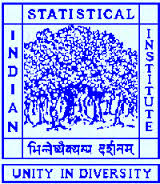Indian Statistical Institute

P.C.
Mahalanobis Memorial Lectures
Low rank structure in highly multivariate models
by
Professor Iain M. Johnstone

Iain M. Johnstone is Professor in the Department of Statistics at Stanford University and holds a joint appointment in biostatistics in the Department of Biomedical Data Science in Stanford's School of Medicine
Professor Iain M. Johnstone, a native of Australia, he received his Ph.D. in Statistics from Cornell in 1981. His work in theoretical statistics has used ideas from harmonic analysis, such as wavelets, to understand estimation methods in statistical signal and image processing. More recently, he has applied random matrix theory to the study of high-dimensional multivariate statistical methods, such as principal components and canonical correlation analysis. In biostatistics, he has collaborated extensively with investigators in cardiology and prostate cancer.
He is a Fellow of the Americal Statistical
Association, a member of the National Academy of Sciences, USA and a former
president of the Institute of Mathematical Statistics. From 2003 - 2008, he
served as Senior Associate Dean for Natural Sciences and Vice Dean of
Humanities and Sciences at Stanford. He has served on advisory committees for
the National Research Council and as a former chair of the NSF Advisory
Committee on Mathematical and Physical Sciences.
Lecture
Date : 2nd February, 2017 (Thursday)
Time : 3.30 pm
Title : Low rank
structure in highly multivariate models
Abstract
In 1964, Alan James gave a remarkable classification of many of the eigenvalue distribution problems of multivariate statistics, including principal components analysis. After setting the stage with PCA, we show how the classification readily adapts to contemporary `spiked models' -- high dimensional data with low rank structure. In particular we approximate likelihood ratios when the number of variables grows proportionately with sample size or degrees of freedom. High dimensions bring phase transition phenomena, with quite different likelihood ratio behavior for small and large spike strengths. James' framework allows a unified approach to problems such as signal detection, matrix denoising, regression and canonical correlations. Joint work with Alexei Onatski and Prathapa Dharmawansa.
The lecture will be held in Second Floor auditorium. All are welcome.